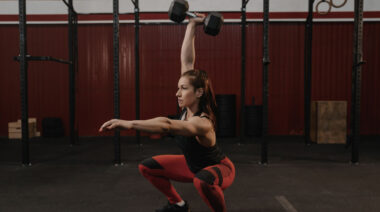Developing a leaner physique with visible abs has has always been one of the most popular fitness goals. While strong might be the new sexy, it isn’t as if a lean, muscular physique and a stunning set of six-pack abs are going out of style. You probably understand that in order to shed the fat that’s covering your abs, you need to go into a caloric deficit, i.e. eat less calories than you’re burning.
But if you’re dieting in order to increase your muscle definition, you probably also know that hunger can be a huge issue. In fact, hunger might be the single biggest reason why people fall off their diets, and fail to develop a leaner, meaner physique. As determined as you might be in the beginning of your cutting phase, that determination quickly wanes after the first two weeks on your fat loss plan. When hunger hits you, if you’re not prepared, you will fall off the wagon.
Luckily, there are a few tricks that can help you mitigate hunger and stick to your fat loss diet successfully over the long run, in order to reveal all the muscle that is hiding under a layer of fat. If you want to learn how to minimize hunger when dieting to make your fat loss endeavor successful, listen up.
Manage Your Hunger and Satiety Hormones
Hunger and satiety are largely controlled by your endocrine system. To manage and minimize your hunger in a way that lets you stay consistent with your fat loss plan, you first need to learn what hunger and satiety are, and how they work.
You have two main hunger and satiety hormones: ghrelin and leptin. Ghrelin is your main hunger hormone, and it directly signals your brain that you need to seek out food. Leptin, on the other hand, is your main satiety hormone. It is produced mainly in fat cells, and it signals your brain that you are full and should stop eating. Generally, ghrelin levels are highest and leptin levels are lowest just before a meal, and vice versa—ghrelin levels are lowest and leptin levels are highest right after a meal.
The crucial detail about your hunger and satiety hormones is that they generally take around 15-20 minutes to fully kick in and do their job. So if you have the habit of eating like it’s a race, this might lead you to consume the equivalent of a small farm before leptin has had the chance to kick in and tell you to get off the table. This might cause you to eat more than you normally would, ultimately sabotaging your weight loss efforts.
In order to ensure that your hormones are able to do their job, take around 25 minutes to finish each meal. This way your ghrelin levels will have had the time to decrease, and your leptin levels will have had the time to rise. To incorporate this habit into your daily life, you could either time your meals, or if you’re eating out with other people, you could just take on the pace of the slowest eater at the table. Small children are often good pace-setters.
Know Your Macros
Macronutrients are your proteins, fats, and carbohydrates, and they provide you with the energy to function. What you might not know is that each macronutrient provokes a different satiety response.
Protein is the most satiating macronutrient out of the three. This is one of the reasons why you want to make sure that you’re consuming a sufficient amount of protein when you’re on a fat loss diet. It will help you feel full longer, and mitigate uncontrollable hunger. You want to consume around 0.9g of protein per pound of body weight (or 2 g per kg) per day.
Dietary fat is the second most satiating macronutrient, while carbohydrates come in last. This might be one reason why some people are better able to sustain a caloric deficit on a LCHF (low carb, high fat) diet. It’s just harder to overeat on almonds, as opposed to overeating on chocolate and donuts.
There is a caveat to this, though: while 1g of carbohydrate contains 4 calories, 1g of dietary fat contains 9 calories. So you still need to keep an eye on your total caloric intake to make sure that it doesn’t go out of whack.
Pick Foods Lower in Calories Per Gram
Another way to mitigate hunger on a fat loss diet is to pick foods that are relatively lower in calories per gram. One of the ways your body manages hunger and satiety is through stretch receptors in your stomach. If your stomach is fuller, satiety hormones are secreted to tell you to stop eating.
Since you need to eat less calories, but at the same time you want to minimize hunger, your best bet is to pick foods that are relatively lower in calories per gram. For example, 100g of boiled white rice contain 130cal, while 100g of boiled broccoli contains just 35cal.
Substituting foods relatively lower in calories for calorie-dense foods will help you reduce your caloric intake while fighting off hunger.
Double Down on Solid Food
People who are struggling to gain weight are often advised to add liquid calories. This is not a coincidence, because solid food leaves the stomach slower than liquids, and are more satiating. This is also why if you’re on a fat loss diet, you want to swap the orange juice and milk for water. You might also want to substitute solid food for your liquid meals as well, for the time being. This will help you further minimize hunger when you’re in a deficit.
Whenever you’re on a fat loss diet—especially after the first few weeks—you are going to experience hunger. How you manage that hunger will ultimately dictate the success or failure of your fat loss efforts. If you follow the tips outlined above, you’ll be able to mitigate it to a point where it’s manageable and doesn’t throw you off your diet.
This will enable you to stick to your plan for a long enough period of time to shed the unwanted fat off of your body, and reveal the muscle definition that’s hiding underneath.






